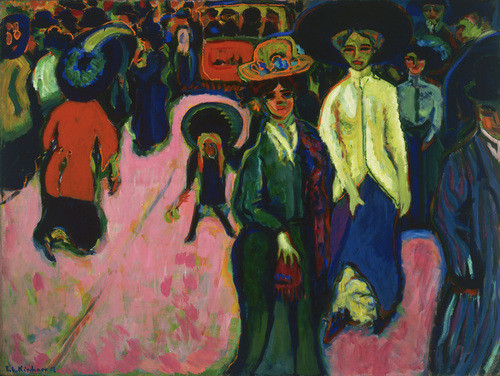A few years ago, my fifth grade gifted and talented students completed a unique research project. Specifically, we sent letters to museum directors asking for input about one object,
artifact, work of art, or a creative selection from their museum's collections. The selection could be a personal favorite, possess significant cultural relevance, be a "best" example of
its kind, tell a story, promote a new idea, or expose students to a new experience.
The purpose of the project was to provide resources for interdisciplinary learning, to present opportunities to think in new ways, and to enhance subject matter with activities that promote
creativity and provide cultural relevance. Most directors were eager to participate, and many provided supplemental information and resources. Their thorough responses are best
characterized by the words of one director, "Thank you for reaching out."
Below are the four questions we asked. (Since some respondents have moved on to different institutions, I share only the museum position, instead of the person's name.)
October's object of the month is from the Museum of Modern Art (MoMA). The Assistant Director of School and Teacher Programs answered our questions as
follows. (Excerpt)
Selected Object: Street, Dresden, Ernst Ludwig Kirchner. 1919.
1. What information and essential understandings should students know about your selection?
(Information taken from MoMA learning):
At the time he made this painting, Ernst Ludwig Kirchner was living in Dresden, a large city in southeast
Germany. In a letter to fellow painter Erich Heckel, he wrote of the Dresden crowds. “Completely strange faces pop up as interesting points through the crowd. I am carried along
with the current, lacking will. To move becomes an unacceptable effort.” Kirchner heightened the colors of this city scene, depicting the figures with mask like faces and vacant eyes
in order to capture the excitement and psychological alienation wrought by modernization.
The crowded city street – here, Dresden’s fashionable and wealthy Konigstrasse (King Street) – was a frequent subject for artists in the German Expressionist collective Die Brucke (The Bridge), which Kirchner helped found in 1905. Artists associated with Die Brucke sought an authenticity of
expression that its members felt had been lost with the innovations of modern life.
2. What questions would you ask
students to stimulate curiosity and/or creative thinking about your selection?
I would always start off with asking them what they see and notice? I would make sure to have them do a thorough visual description of the artwork. l would also ask them to use their senses and imagine what it would be like to step into this scene. What would they see? hear? smell? I often do an activity with this work of art where I ask students to write a postcard home from this place, describing in detail the things they would experience.
3. Do you have any suggestions for
incorporating your selection into a specific subject?
This work of art could easily be integrated into history/social studies, literature, art, art studio. If you look at the framing on MoMA Learning, you will see it within the context of “City Life.” This is a broad theme that would also allow for integrating other works of art that deal with the evolution of cities in the Modern period.
4. Are there other resources to help
us learn more about your selection?
Yes, both of the links provided above have information about the object and how it relates to other themes around Modernism and
Expressionism. Also included on the MoMA learning site is a link to another MoMA site which explores Kirchner and his works of the street of Berlin.


